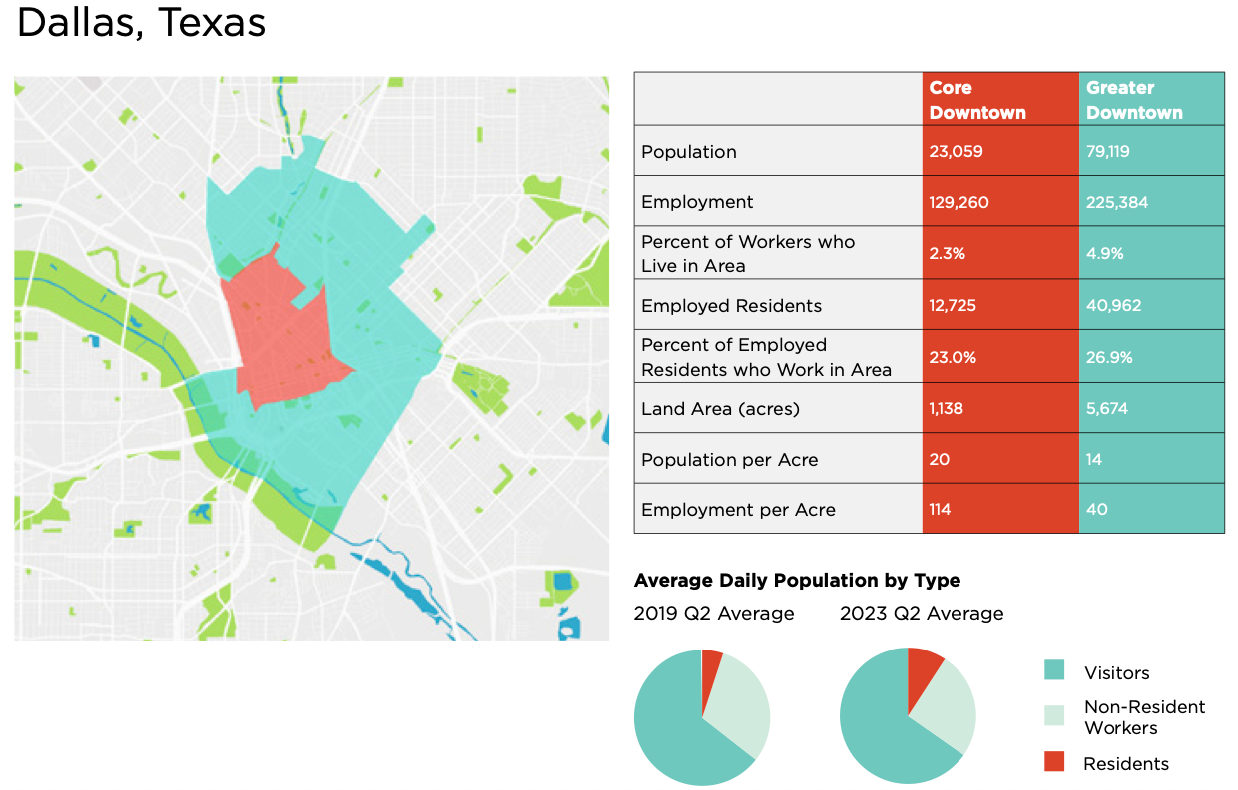A new study of 26 of the country’s largest downtowns finds that downtown Dallas is clawing its way back from the pandemic.
Last week, Bloomberg’s Richard Florida published an interesting piece on what has driven downtown growth since the pandemic. He examined a new study by Paul Levy and researchers at Philadelphia’s Center City District. Levy’s research used cell phone tracking data to chart downtown activity patterns for three groups: people who work downtown but don’t live there, people who live downtown, and visitors who come for entertainment.
Among all three groups combined, Dallas, Fort Worth, and Austin have seen a more than 75 percent increase in activity in the second quarter of this year compared to the same quarter in 2019. San Antonio and Houston are just slightly ahead of those three cities.
Levy’s team found that office activity has rebounded to about 65 percent of pre-Covid levels almost everywhere, including Dallas, Austin, and Houston. Some cities have reached 75 percent or more, including Fort Worth (72 percent) and San Antonio (85 percent).
Census data show that in Dallas, Fort Worth, and Houston, fewer than 30 percent of downtown workers live downtown. San Antonio has the lowest number at roughly 18 percent, while Austin has the most at a little more than 35 percent.
Houston and Austin saw the lion’s share of post-pandemic visitor traffic growth in Texas at 82 percent, while Dallas, Fort Worth, and San Antonio hover at a little over 75 percent.
But what has grown the most, they found, is the number of people moving downtown post-pandemic. That includes Dallas, where downtown residency is up 118 percent compared to 2019. That is one of the highest increases of any Texas city on the list. (Dallas was bested only by Houston, which grew by 121 percent.) Austin posted growth of 106 percent, while Fort Worth and San Antonio were around 100 percent.
Of all Texas cities on the list, Dallas lost the fewest downtown residents during the pandemic and ultimately rebounded the best, followed by Austin, Houston, Fort Worth, and San Antonio.
All of this, Center City District’s report explains, means that downtowns nationwide are at an inflection point.
“Fundamentally, this report, like the organization that produced it, is place-focused and action-oriented, and asks how do we accelerate recovery in city centers?” Levy asks in the introduction. “But if history teaches anything, it is that cities are places that must continually reinvent themselves, places that must choose new directions, places that require determined leaders to fashion new futures.”
Doing that, the report says, will require looking at everything—quality of life downtown, crime, services, public transportation, and even the mix of companies setting up shop downtown.
“More fundamentally, can (or should) we restore the status quo of 2019 or do downtowns need to reinvent themselves, learning to thrive under fundamentally changed conditions?” Levy asked.
It’s a question to consider as the city finds opportunities to shape its future downtown. A subway system was already scuttled and City Council members have begun to explore a potential streetcar system that links existing lines in Oak Cliff and Uptown through downtown. City officials are talking about land uses beyond additional parking. And discussions are happening regarding how to care for the things that draw people downtown, like its Arts District and its parks.
But a big question remains: Is downtown Dallas a place to call home, a place to play, work, or all of the above? The answer may lie in the data.
Author










